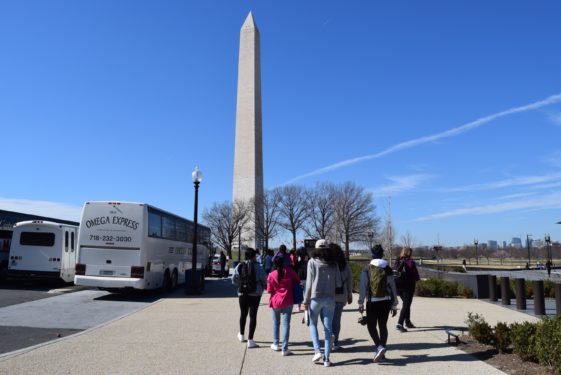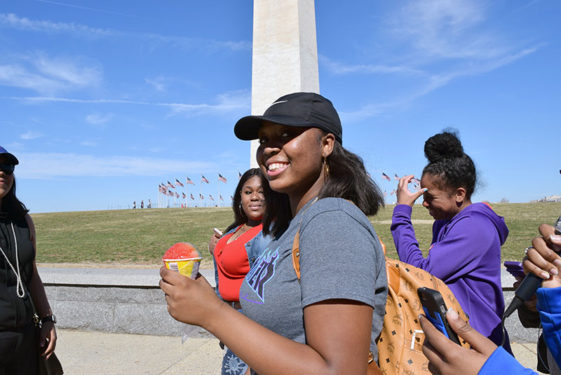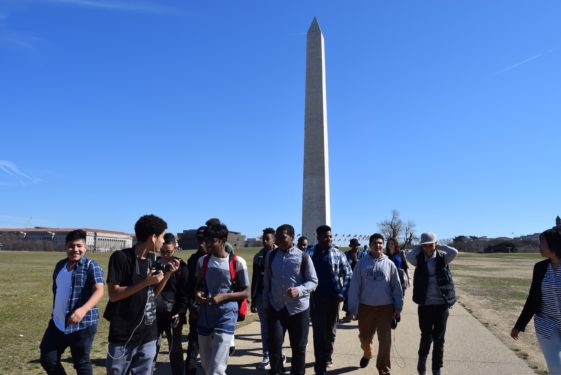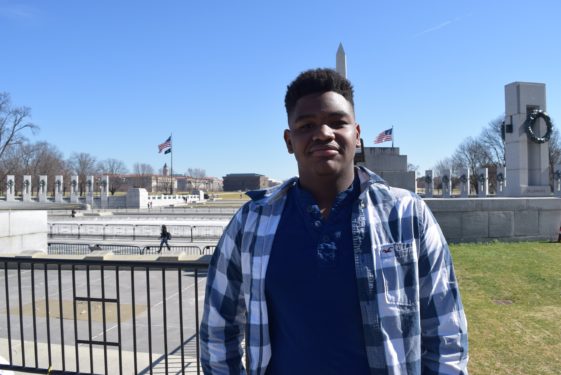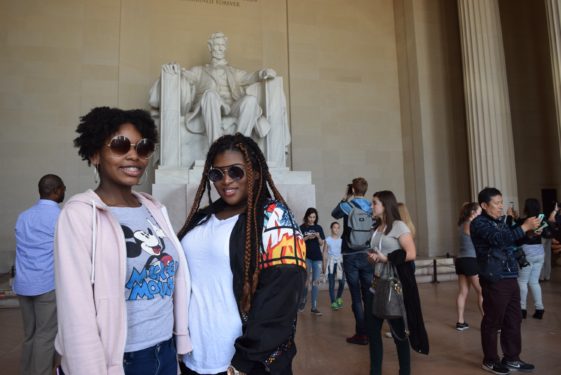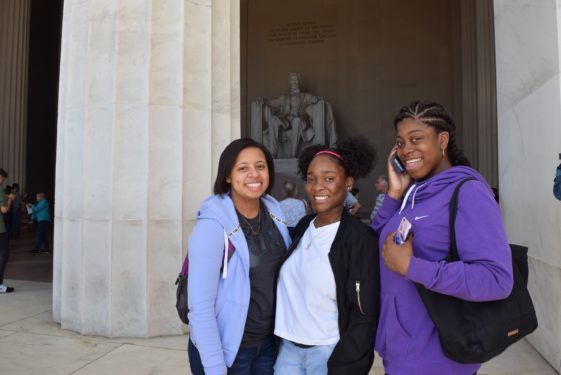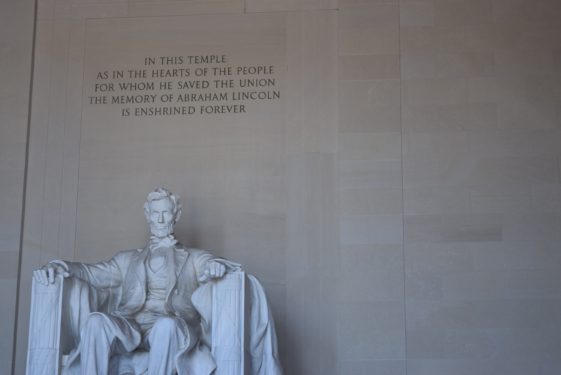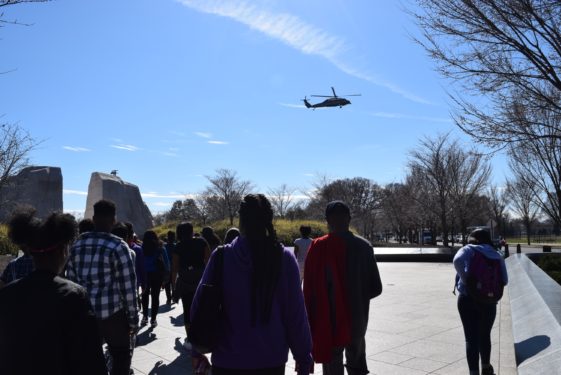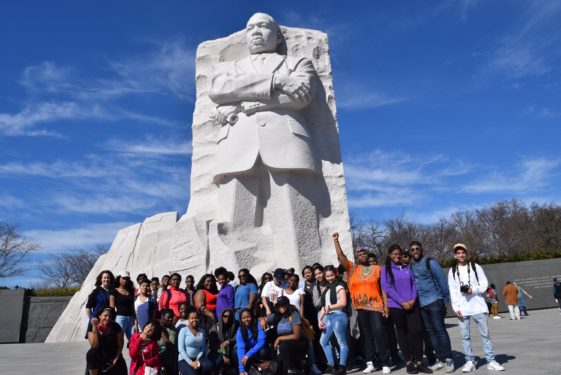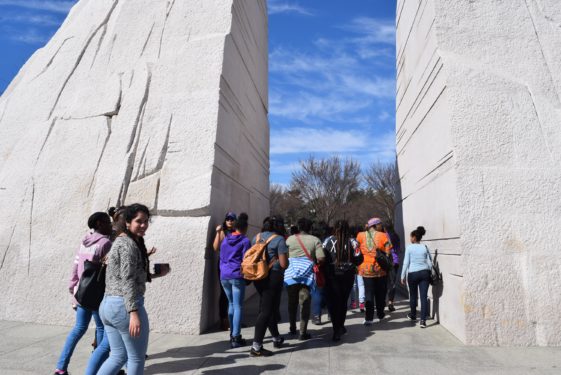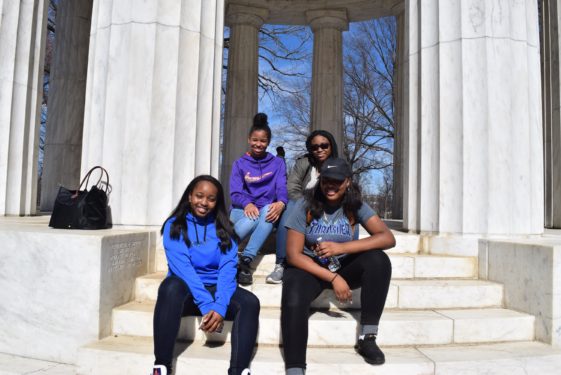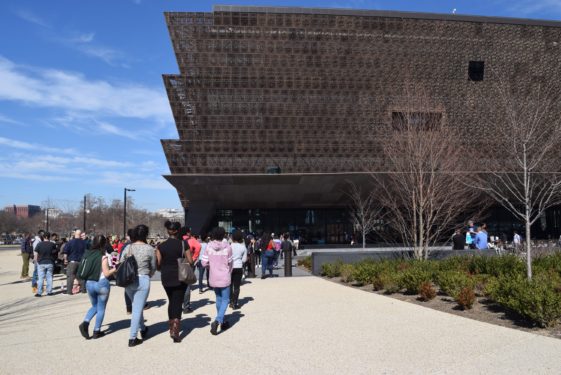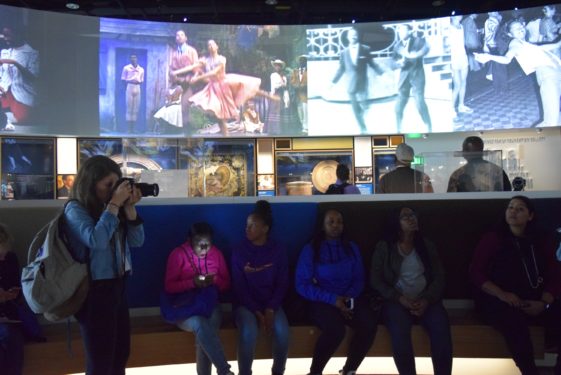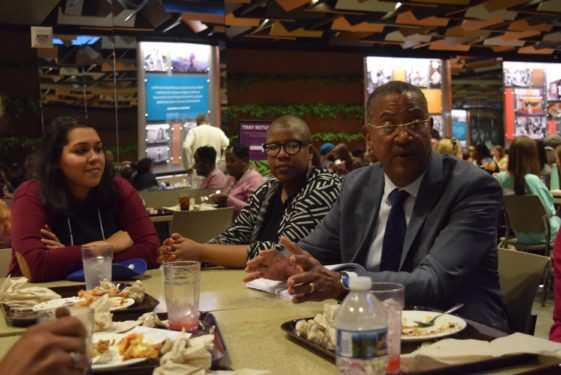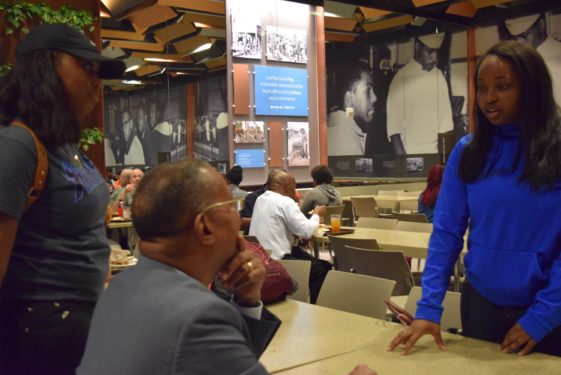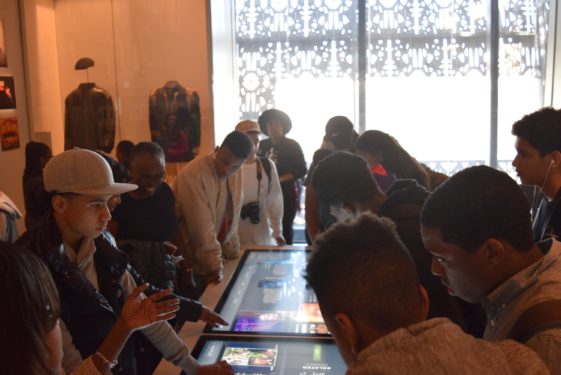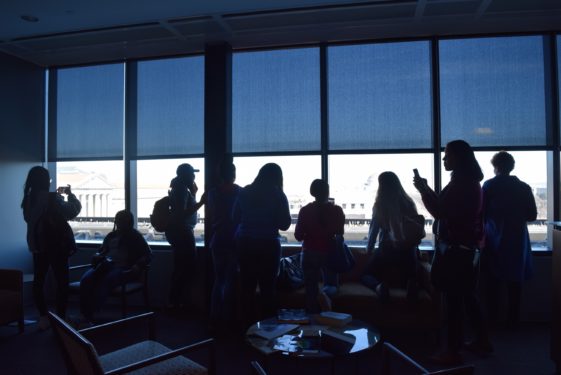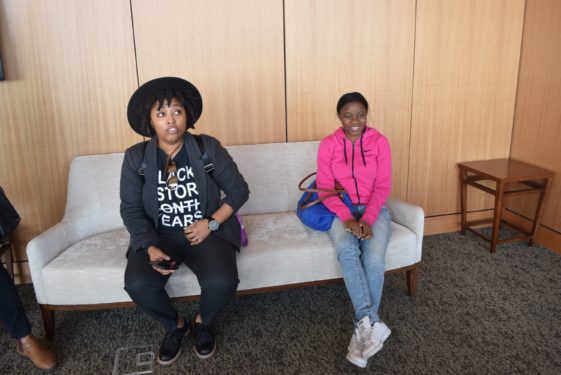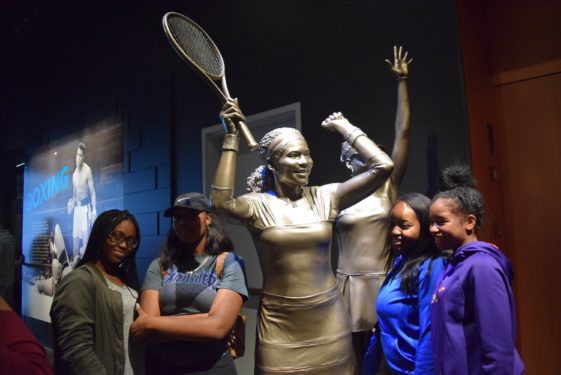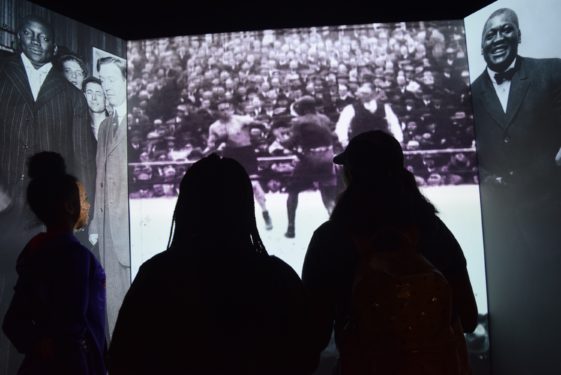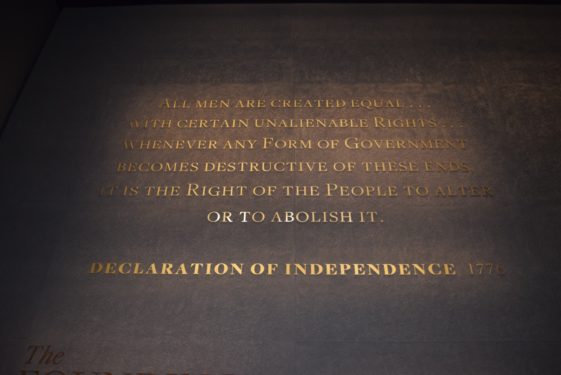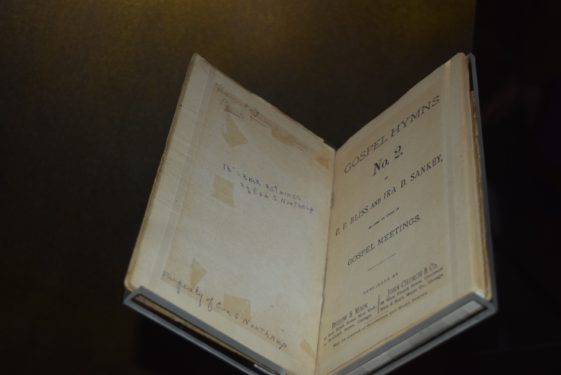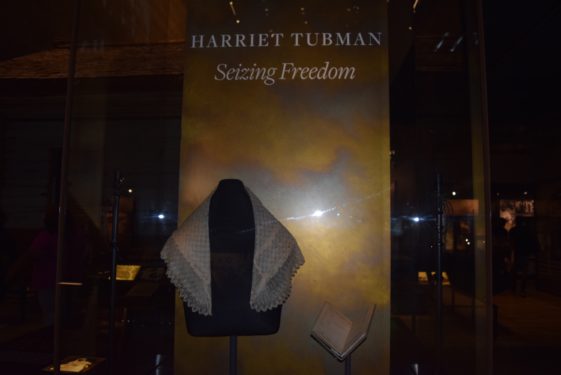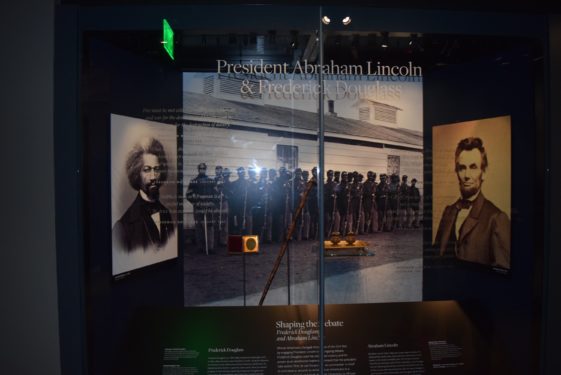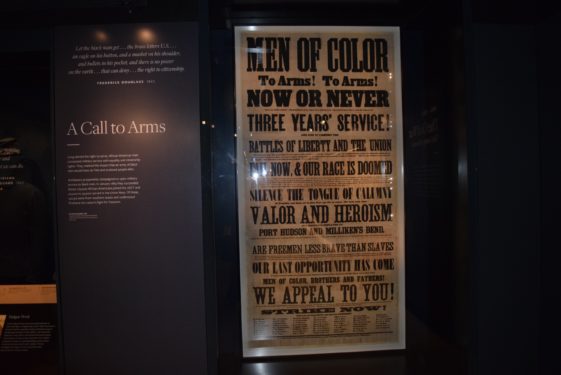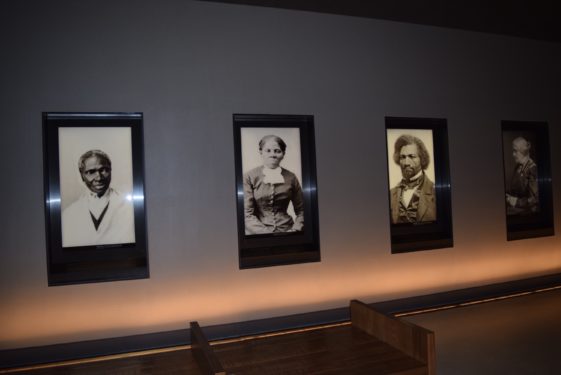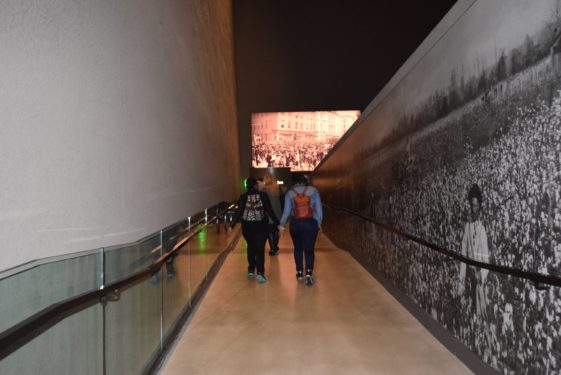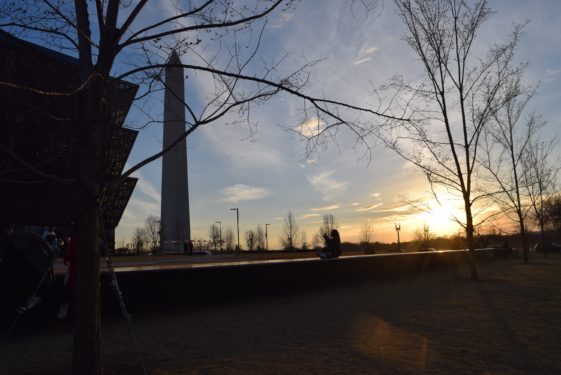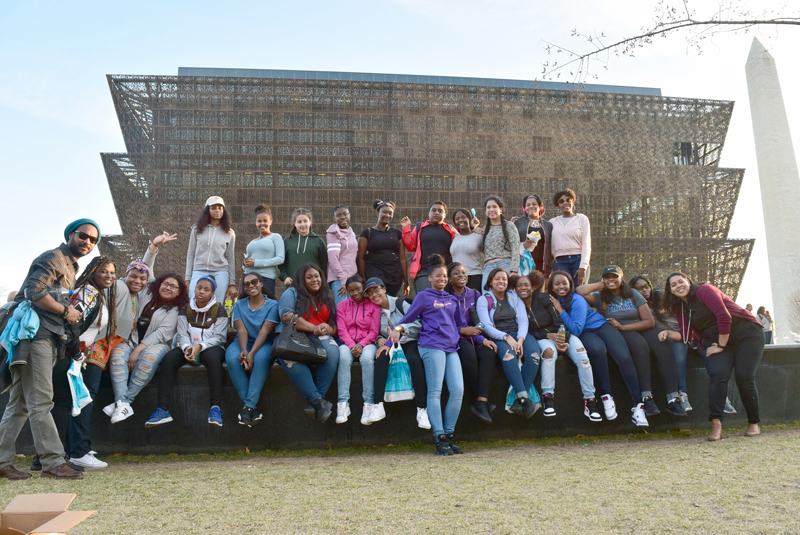
Washington’s newest attraction – the National Museum of African American History and Culture – welcomed its millionth visitor in February, not even six months after its official opening. For some of the young women from St. Joseph H.S., Downtown Brooklyn, the museum visit was their first experience outside of New York City and into a cultural exhibition of their African heritage.
More than 20 students from the school’s United African Women’s Society, student ambassadors and essay writers boarded a coach bus at 6 a.m. Feb. 23 for a four-hour commute to D.C. Except this wasn’t just an ordinary field trip.
“It’s not just a trip to a museum, but a moment to meet with staff, to connect and be empowered,” said St. Joseph’s director of marketing and admissions, Elizabeth Peralta. “My desire in organizing the trip was to show these girls that it’s possible to be a part of a history that has shaped the very America we know today.”
Peralta used to work at the Smithsonian Institute and wanted to introduce her students to her mentors and friends at the museum who impacted her adult life.
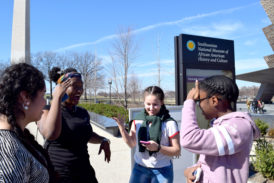
“It’s important to show our youth that alone we cannot succeed, but through a communal effort and desire, we flourish,” she added. “National Museum of African American History and Culture has that to show and so much more.”
At first, the bus ride resembled a girls’ slumber party with the pace sleepy and sluggish, but after the first stop at the halfway point, the momentum started to change. A group of girls posed for selfies in front of a ‘State of Maryland’ sign. Another group did dance moves in the parking lot, unbothered by passersby, showcasing their Brooklyn-sized confidence with every choreographed step.
Dancing alongside the girls was the chair of the school’s department of English and Literature who helped organize their month-long Black History month initiatives.
“It’s vital that women be part of the conversation surrounding the National Museum of African American History and Culture,” said Aiesha Turman. “We are more than 50 percent of the population, are more often than not on the frontlines of building and sustaining community and are integral to the history, arts and culture that the museum champions and celebrates.”
As the miles until the final destination started to dwindle, excitement reached a high note. Reggae music played on speakerphones, following an ensemble that included reciting lyrics together that at times mentioned women Civil Rights activists such as Rosa Parks.
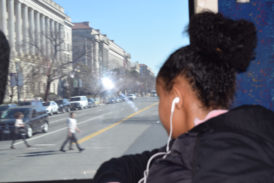
Sitting quietly in the front seat by herself was a Flatbush native who was ecstatic to find out that she had crossed through three states in one day. That’s because Alemtsehay Getahun had never left New York before.
“I’m so excited, I can’t wait to see the city,” Getahun said while looking out into the world beyond her window aisle. She expressed the same sentiments when she described what this trip meant for her.
“I can’t wait to look at the art. It makes me feel special to be able to see it as a woman of color.”
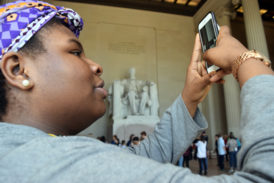
What sights awaited them in the nation’s capital were also highlighted by warm spring weather and sunshine, an escape from the foggy dews back home. First stop in D.C.: walking past the Washington Monument and visiting the Lincoln Memorial.
Joining them once they arrived were students, parents and faculty from brother school, La Salle Academy, Manhattan.
Junior Alexis Jimenez saw the benefit as twofold – experiencing the museum and being in a city filled with influential leaders.
“I’m trying to be a politician,” said Jimenez. “Vote for me in 2024, I will be a city councilman in Harlem.”
Leadership qualities were not his weakness, seeing the way he interacted with his classmates by making sure all 16 of them were included in group photos.
“I feel like it’s a very educational trip, very inspirational,” Jimenez added. “The fact that I’m a black man and I’m visiting the African American History museum and the Martin Luther King Jr. museum in Black History Month is cool.”
The young visitors entered the four-story building and viewed more than 36,000 artifacts, including pieces from boats and metal chains used in the transatlantic slave trade to an actual Tuskegee Airplane, and even a segregated railcar and slave cabin. Even religious articles such as Harriet Tubman’s Bible were on display.
“All of our museums across the country have to reflect the full diversity of our nation,” said John W. Franklin, a member of the staff of the Smithsonian Institute. “Most museums really began as places that held the art or property of wealthy, powerful men and these were mostly white men.
“So not only do we have to tell this history, but we have to collect it and we have to take it seriously as any other part. Whether it’s a city museum or a state museum or county museum or national museum, since we’re using public money, they really should reflect the full diversity of whatever that society is.”
Walking through the halls that day was a young woman donning a custom-made dashiki in colors of crisp orange, lime green and deep purples with a matching head wrap. As junior April Courbe was able to pass through the ‘Musical Crossroads exhibit’ on the fourth floor, her confidence and desire to represent her African roots could easily summarize the essence of what a day at this particular museum represented.
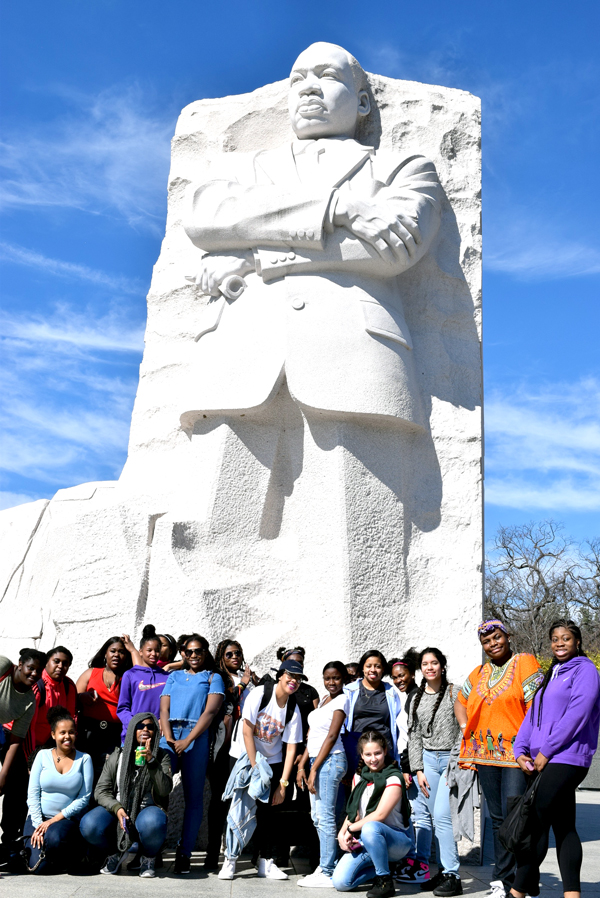
“I feel so empowered by all these women, by Maya Angelou, Queen Latifah, every single one of them,” Courbe smiled. “I love each and every single one of them and every time I’m having doubts about my Afro, about my skin color, I just look at Queen Latifah and say ‘Queen Latifah, you go girl, you rock it, because she’s a plus-size woman and she represents being big and bold and I want to be big and bold. So I’m going to represent her and me.”
RELATED: Read about the students’ reflections about the trip here: ‘Let Them Speak: A Day Dedicated to African American History and Culture in D.C’


